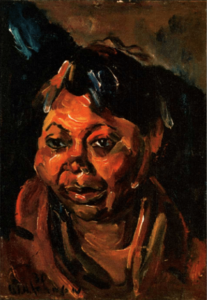“Thank You, Ma’am”
★★★★★

Mrs. Luella Bates Washington Jones is the unforgettable character from Langston Hughes’s short story “Thank You, Ma’am.” She is unforgettable to the fourteen-year-old boy who tries to steal her purse and unforgettable to your students when you share this story with them.
I’ve enjoyed reading this story to my high school students over the years. It has enough action and drama in it to make it interesting, and more importantly, it raises issues related to how we relate to people, particularly those who irritate or anger us.
My intention in this post is to use this story as an example of how literature can be used to involve our students in others’ experiences. Literature can challenge and transform students’ perspectives from being small and misguided to being more Christ-like.
After reading the story, you can use the following questions and prompts to delve into the story and get the students thinking:
- Describe the main characters in this story.
- Where did the story take place and when?
- What was the social/cultural/economic setting of the story? What are the clues?
- Rehearse what Mrs. Jones does when Roger tries to snatch her purse, then ask, “Do you approve of Mrs. Jones’s actions? (How many say yes, how many no?)
- Were Mrs. Luella Bates Washington Jones’s actions appropriate for a Mennonite who believes in turning the other cheek? Does she act out of love and kindness toward Roger? Can love ever be tough or even aggressive?
- What enabled her to respond the way she did?
- What kind of a life had the woman lived? Easy?
- How did that prepare her for this situation? (She was able to understand Roger as a needy person and see beyond his criminal behavior.)
- Do we have any clues for the reason that she had become a compassionate person instead of a hard, bitter woman?
- What was the change(s) that took place in Roger?
- What was the catalyst for the change in Roger’s perspective?
- Contrast the way that Mrs. Jones treats Roger with a more conventional response to crime (police, juvenile delinquency center)—contrast the results of these two approaches as well
- What are the themes of this story? What ideas and values are expressed in the story? (the power of good to overcome evil, the importance of seeing the difficult circumstances and the neediness of those who we tend to despise)
So who are the people that anger or disgust you? What can you learn from Mrs. Luella Bates Washington Jones? Can you learn anything here about how to relate to these people with greater understanding and compassion?
(artist credit: Minnie, 1930, William Johnson, National Museum of American Art, Washington, DC)
Leave a Reply